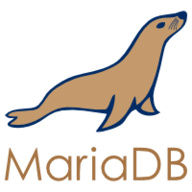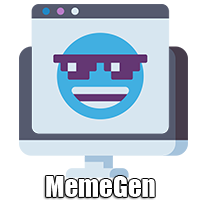MakeMKV is your one-click solution to convert video that you own into free and patents-unencumbered format that can be played everywhere. MakeMKV is a format converter, otherwise called "transcoder". It converts the video clips from proprietary (and usually encrypted) disc into a set of MKV files, preserving most information but not changing it in any way. The MKV format can store multiple video/audio tracks with all meta-information and preserve chapters. The GUI of the application is accessed through a modern web browser (no installation or configuration needed on the client side) or via any VNC client. Also, being based on Alpine Linux, size of this container is very small. A fully automated mode is also available: insert a DVD or Blu-ray disc into an optical drive and let MakeMKV rips it without any user interaction. For a complete documentation of this container, see https://github.com/jlesage/docker-makemkv#readme NOTE: For the container to have access to your optical drive(s), you need to add them to your container configuration. This is done by adding a new "Device". An optical drive is represented by two Linux device files: "/dev/srX" and "/dev/sgY". For optimal performance, the container needs both of them. To determine the right devices to use, start the container and look at its log.
Community Apps
Browse our large and growing catalog of applications to run in your Unraid server.

Mango is a self-hosted manga server and reader. Its features include - Multi-user support - OPDS support - Dark/light mode switch - Supported formats: .cbz, .zip, .cbr and .rar - Supports nested folders in library - Automatically stores reading progress - Thumbnail generation - Supports plugins to download from third-party sites - The web reader is responsive and works well on mobile, so there is no need for a mobile app - All the static files are embedded in the binary, so the deployment process is easy and painless

mariadb
Media Applications• Other, Network Services• Other, Other, Tools / Utilities• Utilities
Mariadb(https://mariadb.org/) is one of the most popular database servers. Made by the original developers of MySQL.

Materialious
Media Applications• Video, Media Servers• Video, Productivity, Tools / Utilities• Utilities
Materialious is a privacy respecting frontend for YouTube built ontop of Invidious.
Media Reconciler, or simply mecon, is a cross-platform command line tool which reconciles media within a directory with media in a Plex library. For a given directory of files, it answers simple questions such as: Which ones have failed to have been added to a Plex library? Which ones exist in a Plex library? Which ones have been watched by all users? Which ones have been watched by a sub-set of users? For full documentation see https://github.com/elzik/mecon#mecon

Mobile friendly tool for downloading videos from social media. For direct downloads: http::/api?url=SOME_URL Written in Golang using youtube-dl and ffmpeg for conversion.
Mediaelch is a Tool to manage your movie and show libary regarding the metadata and artwork.
mediagoblin
MediaGoblin is a free software media publishing platform that anyone can run. You can think of it as a decentralized alternative to Flickr, YouTube, SoundCloud, etc. Default user/passwordUser: adminPassword: admin

medusa
Medusa(https://pymedusa.com/) is an automatic Video Library Manager for TV Shows. It watches for new episodes of your favorite shows, and when they are posted it does its magic.
Membarr
Home Automation, Media Applications• Other, Media Servers• Other, Other, Tools / Utilities• Utilities
Membarr is a discord bot that invites discord users to Plex and/or Jellyfin. Manually create users and invite server members with a single command, or let Membarr automatically add server members with a certain role.

Memegen
Media Applications• Other, Other, Tools / Utilities• Utilities
A simple web service that generates a meme image given text and an image URL. -URL parameters: image: URL of the image top: text to add at the top of the image bottom: text to add at the bottom of the image -Syntax: memegen.example/?top=Top Text&bottom=Bottom Text&image=http://url.of/your/image.jpg
MKVcleaver is a GUI (Graphical User Interface) for mkvtoolnix, designed to extract data from MKV files. It can be used in a batch mode (loading and extracting data from many files) as well as single file mode. It has a simple GUI interface, but a lot of functionality. The GUI of the application is accessed through a modern web browser (no installation or configuration needed on the client side) or via any VNC client. Also, being based on Alpine Linux, size of this container is very small. For a complete documentation of this container, see https://github.com/jlesage/docker-mkvcleaver#readme
MKVMuxingBatchGUI
App for muxing (merging) videos with subtitles, audios, chapters and attachments with many options. The GUI of the application is accessed through a modern web browser (no installation or configuration needed on the client side) or via any VNC client. Also, being based on Alpine Linux, size of this container is very small. For a complete documentation of this container, see https://github.com/jlesage/docker-mkv-muxing-batch-gui#readme
MKVToolNix is a set of tools to create, alter and inspect Matroska files. The GUI of the application is accessed through a modern web browser (no installation or configuration needed on the client side) or via any VNC client. Also, being based on Alpine Linux, size of this container is very small. For a complete documentation of this container, see https://github.com/jlesage/docker-mkvtoolnix#readme

Mopidy is an extensible music server written in Python. Mopidy plays music from local disk, Spotify, SoundCloud, Google Play Music, and more. You edit the playlist from any phone, tablet, or computer using a range of MPD and web clients. This is Mopidy for unraid with support for snapcast and icecast It is based on whhoesj/mopidy with additin of TuneIn and Youtube and Iris Web Interface. set up the docker set up the network to br0 with an ip set up volume mount to /mnt/user/appdata/mopidy/mopidy.conf >> /mopidy.conf set up volume mount for tmp/snapfifo if you use snapcast /mnt/user/appdata/mopidy/tmp/ >> /tmp set up volume mount for your local media generate the mopidy.conf file Doc here https://docs.mopidy.com/en/latest/config/ example here https://github.com/wernight/docker-mopidy/blob/master/README.md authentication for soundcloud and spotify https://www.mopidy.com/authenticate/ use my docker icecast or snapcast for music streaming: for audio you need a special config for snapcast you have to generate the audio output in a pipe file /tmp/snapfifo this is mounted in both docker container output = audioresample ! audio/x-raw,rate=48000,channels=2,format=S16LE ! audioconvert ! wavenc ! filesink location=/tmp/snapfifo icecast output = lamemp3enc ! shout2send async=false mount=mopidy ip=X.X.X.X port=8000 password=XXXXX

Mopidy is an extensible music server written in Python. Mopidy plays music from local disk, Spotify, SoundCloud, Google Play Music, and more. You edit the playlist from any phone, tablet, or computer using a range of MPD and web clients. This is Mopidy3 for unraid with support for snapcast and icecast. set up the docker set up the network to br0 with an ip set up volume mount to /mnt/user/appdata/mopidy/ >> /config/ set up volume mount for tmp/snapfifo if you use snapcast /mnt/user/appdata/mopidy/tmp/ >> /tmp set up volume mount for your local media generate the mopidy.conf file Doc here https://docs.mopidy.com/en/latest/config/ example here https://github.com/maschhoff/docker/blob/master/mopidy/mopidy.conf authentication for soundcloud and spotify https://www.mopidy.com/authenticate/ *authenticate spotify https://developer.spotify.com/documentation/web-api/quick-start/ use my docker icecast or snapcast for music streaming: for audio you need a special config for snapcast you have to generate the audio output in a pipe file /tmp/snapfifo this is mounted in both docker container output = audioresample ! audio/x-raw,rate=48000,channels=2,format=S16LE ! audioconvert ! wavenc ! filesink location=/tmp/snapfifo icecast output = lamemp3enc ! shout2send async=false mount=mopidy ip=X.X.X.X port=8000 password=XXXXX

Mopidy3
Mopidy is an extensible music server written in Python. Mopidy plays music from local disk, Spotify, SoundCloud, Google Play Music, and more. You edit the playlist from any phone, tablet, or computer using a range of MPD and web clients. This is Mopidy3 for unraid with support for snapcast and multiple instances with automatic snapcast stream management. set up the docker set up volume mount to /mnt/user/appdata/mopidy/ >> /config/ add TCP ports for MPD, HTTP and TCP ports for each additional instance you want A configuration has been autogenerated with basic settings. The template for it can be found in the container in /home/templates. It is located in /etc/mopidy Do NOT modify the part of the audio output setting that says port=4953. This is automatically replaced for each instance generated to fill in the host and port. To configure the instance and snapcast settings, copy the template to your config folder and modify it. cp /home/templates/server.json /config/.
This is an app that helps you and your friends pick a movie to watch from a Plex server. MovieMatch connects to your Plex server and gets a list of movies (from any libraries marked as a movie library). As many people as you want connect to your MovieMatch server and get a list of shuffled movies. If two (or more) people swipe right on the same movie, it'll show up in everyone's matches. The movies that the most people swiped right on will show up first.

mstream
mstream(https://mstream.io/) is a personal music streaming server. You can use mStream to stream your music from your home computer to any device, anywhere. There are mobile apps available for both Android and iPhone.
Muer is a modern, open-source music player for you and your friends. Features: Beautiful UI/UX Music from Youtube Self-hosted Default fallback to Youtube embedded player Muer is based on Invidious.

music-assistant
Turn your Home Assistant instance into a jukebox, hassle free streaming of your favourite media to Home Assistant media players.

mylar3
Mylar3(https://github.com/mylar3/mylar3) is an automated Comic Book downloader (cbr/cbz) for use with NZB and torrents written in python. It supports SABnzbd, NZBGET, and many torrent clients in addition to DDL.
MyMpd
MyMPD + MPD pre-configured for Snapcast

noisedash
Self-hostable web tool for generating ambient noises. README: Run this container first then stop it, it'll error for missing config. Copy this file https://raw.githubusercontent.com/kaythomas0/noisedash/main/config/default.json into your NoiseConfig path. Then restart the container.

Notifiarr
Official Notifiarr Client This application provides the gateway for media requests to your starr application. https://Notifiarr.com Update application configuration in the WebUI after install. Default port is 5454. Variables defined in unRAID config override config file settings. Must be privileged to report system drive details (for snapshot notifications). Mount additional paths anywhere to report drive space usage.
nzbhydra2
WireGuard VPN, Privoxy and Unbound built-in! Statistics app for usenet indexers iirc. Wait, no, "Usenet meta search" said Google search.

nzbhydra2
Downloaders, Media Applications• Other, Tools / Utilities• Utilities
Nzbhydra2(https://github.com/theotherp/nzbhydra2) is a meta search application for NZB indexers, the "spiritual successor" to NZBmegasearcH, and an evolution of the original application NZBHydra(https://github.com/theotherp/nzbhydra). It provides easy access to a number of raw and newznab based indexers.

NZBHydra2
Downloaders, Media Applications• Books, Music, Photos, Video, Productivity
NZBHydra 2 is a meta search for newznab indexers and torznab trackers. It provides easy access to newznab indexers and many torznab trackers via Jackett. You can search all your indexers and trackers from one place and use it as an indexer source for tools like Sonarr, Radarr, Lidarr or CouchPotato. UPDATE: The container will check on every start/restart if there is a newer version available. MANUAL VERSION: You can also set a version manually by typing in the version number that you want to use for example: '3.4.3' (without quotes).
obs-ndi
Game Servers, Media Applications• Video, Media Servers• Video, Productivity
The OBS with NDI is incorporated into the container and can be used to stream your desktop. With the latetest OBS version the is support for obs-websocket. The VNC password is 'headless'. You can connect with your own VNC client at 5901 or use the webclient at 6901
OBS-NDI
Game Servers, Media Applications• Video, Tools / Utilities• Utilities
Docker OBS and NDI (QT6) This container is based on https://hub.docker.com/r/patrickstigler/obs-ndi. Due to some QT-changes in the OBS code the initial version by patrick needed some changes. To start the container: docker run --shm-size=256m -it -e VNC_PASSWD=headless -p 5901:5901 -p 6901:6901 -p 4455:4455 asparon/obs-ndi:latest The shm-size argument is to make sure that the webclient does not run out of shared memory and crash. You have to change the "Network Type" to "Custom: br0" in order to be able to find the NDI-Source of your desktop in the container an vice versa. You can change the default VNC password of 'headless'. You can connect with your own VNC client via 5901 or use the webclient at 6901. To enable GPU Support: Nvidia: add -e NVIDIA_VISIBLE_DEVICES=your_GPU_ID -e NVIDIA_DRIVER_CAPABILITIES=all and also add --runtime=nvidia as extra parameter. Intel: add --device=/dev/dri (not tested yet)